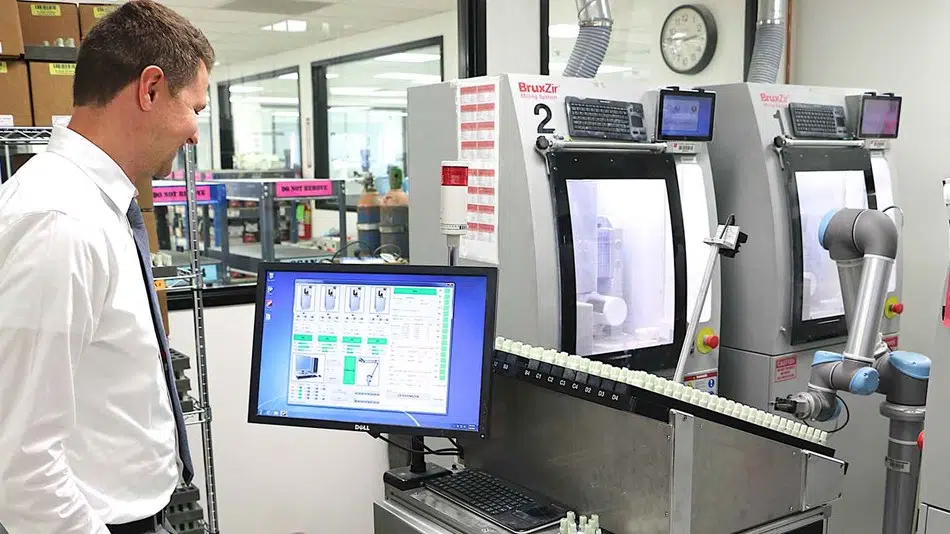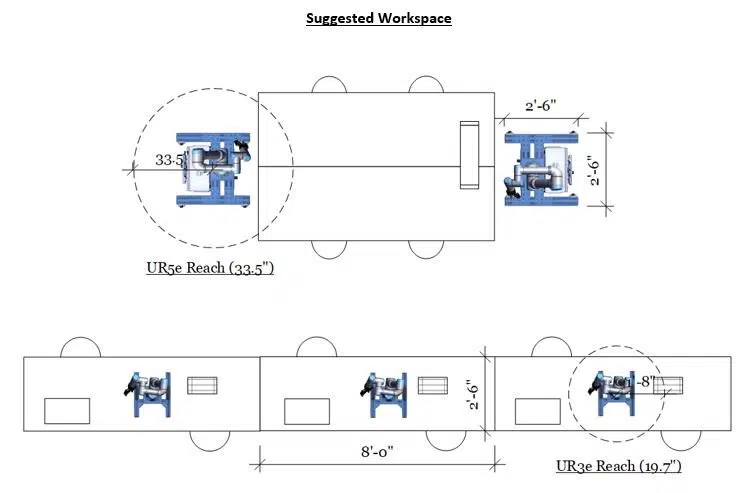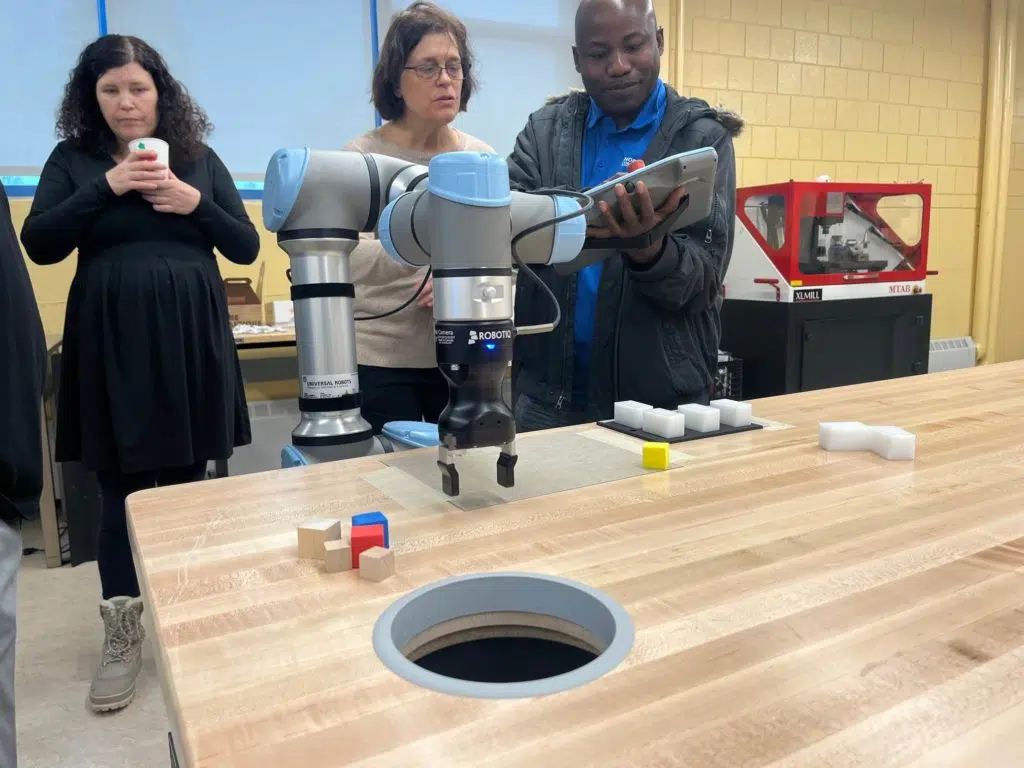More and more schools are adding robotics and automation to their programs because of its relevance to so many industries. Starting a new program, especially on a topic that is still evolving and growing in the industry, can be overwhelming. In this article, we'll give you tips and resources to help you develop a high school robotics program for your school.
Why Is Robotics Important in Education?
First, let's cover why robotics is important in education. Rapidly advancing technology is transforming almost every industry, introducing new technologies and ways of working. Industry 4.0 is one revolution that has introduced new technologies and skills that employees need, including robotics. When students learn robotics, they gain relevant skills to set them up for successful career paths in growing fields.
Learning robotics also helps students learn valuable skills that transfer to any future career or post-secondary education path. Robotics teaches students problem-solving, critical thinking, teamwork, and creativity, which are needed for many life and career situations.
Researching and Planning the Robotics Program
The first step to starting a high school robotics program is to research to ensure there is a need and interest in your school. Start by assessing your local industry's needs. Look at economic development resources for your state or region, like the Massachusetts regional blueprints, to get an idea of the employer demands.
You might be surprised at how many industries are using robots. They're not just used at manufacturing companies. Many retail, food and beverage, and life sciences companies also use robots. Meet with local industry organizations and employers to find out if they are using or considering robots within their workplaces.

Also, collaborate with nearby community colleges and universities. If they already teach robotics, your program can help prepare students for their degree programs. You can also work together on establishing formal articulation agreements or certification paths like the Festo Industry 4.0 Certification.
If your research points to a need for providing the community with students skilled in robotics, your next step is to gauge student interest. Run a pilot program for a semester or incorporate robotics into an existing class to get a sense of enrollment if it were its own program and to generate excitement.
Funding the Robotics Program
The next step to move ahead with developing a robotics program is determining how you will fund the program and what you will need to budget for. Making sure you have a robotics teacher is the most critical. If you don't have someone on staff to take on this role, you will need to budget for hiring an additional teacher. The teacher will also need professional development of some sort, depending on their background. If they don't come from a robotics or automation background or haven't used robots before, you will need to allocate more to professional development than a teacher with experience.
Another vital component of a robotics program is the space and equipment you will use. AET Labs has worked with schools in transforming existing spaces (like a locker room) to a lab and building out brand new labs—there are options for being creative with your space! There is also a range of robotics equipment available based on the needs of your program and the budget.
There are many ways to fund the items you will need for the robotics program. Outside of Perkins funding, federal and state grant opportunities come up. In Massachusetts, the Skills Capital Grant has helped schools fund equipment needed for new programs. The Massachusetts Life Science Center grants help fund equipment and professional development if the robotics program is related to the life sciences industry.
Creating the Curriculum
There are many resources available to help you develop a curriculum for a robotics program. Some states, like Massachusetts, might have robotics and automation frameworks to give you a starting point. To stay up to date, you can also talk with other robotics teachers or reach out to partners like AET Labs, who have insight into what other schools are doing in their robotics programs.
Some equipment manufacturers provide resources to help teachers. For example, the Universal Robots Skills Package comes with online coursework to help the students learn the robots that can be easily incorporated into a curriculum.
Designing the Lab and Finding Equipment
Even the smallest DOBOT Magician robots will need at least an open table or two for students. Other robots, like Universal Robots collaborative robots, can be moved around a classroom and are safe to be near students. Industrial robots, like a Kuka robot, need to be in cages and, therefore, need more space. Ideally, you will determine the right equipment for your program and then figure out the best space for it, but sometimes your space will dictate your equipment.

You might need to find an existing classroom, renovate part of your building, or add a brand new lab. In any option, there are many considerations to account for with robots, from safety to mobility and electricity. AET Labs can work with you in designing a layout for your space that shows you how robots will fit and what you will need to consider.
To determine the right robot for your program, you will want to evaluate your program goals and the knowledge of your teachers and students in this area. Many robots also come with industry-recognized certifications, so you may want to explore specific robots if certifications are important for your program.
Training the Robotics Instructor
Proper instructor training will ensure that the robots you purchase are being used and that the instructor is not stressed out or intimidated by teaching with them. There are different types of training needed depending on the instructor's knowledge. The most basic is in how to operate the equipment. Some robots make this very easy, like the Universal Robots collaborative robots, which you can program to start working within a half hour of opening the box!

The next level of professional development is determining how best to incorporate the robots into the curriculum. For example, the AET Labs Application Specialists are dedicated to helping teachers use the robots in ways that will help their classrooms. They might teach the instructor new applications for the robot or develop project ideas that teachers can use with their students.
Some manufacturers also offer train-the-trainer programs for teachers. For example, teachers can take a 4-day training with Universal Robots that gives them the authority to provide students with valuable industry-recognized certifications in robotics.
As technology advances and labor shortages continue, robotics and automation will become increasingly prevalent in industries. If you're considering starting a robotics program in your high school, please contact AET Labs. We're happy to provide you with insight into robotics programs at high schools we work with and be your partner through the research and implementation of your robotics program.
